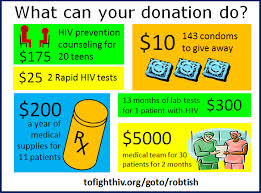 On Tuesday, I wrote a post titled “Things to consider before sending your next direct mail solicitation” and there appeared to be great interest from DonorDreams readers. So, today I decided to drill down on one specific mail solicitation topic — “asking for a specific donation amount” — because it is something few people seem to feel comfortable doing.
On Tuesday, I wrote a post titled “Things to consider before sending your next direct mail solicitation” and there appeared to be great interest from DonorDreams readers. So, today I decided to drill down on one specific mail solicitation topic — “asking for a specific donation amount” — because it is something few people seem to feel comfortable doing.
Everyone I’ve ever talked to about their mail appeal swears that they are good at asking for a contribution in their letter. However, the truth is that many of the letters I receive default to what I call the “passive ask.”
Here are a few examples of what I’m talking about:
- “But we can’t do any of this without you. We need you to make a contribution today.”
- “All gifts are appreciated and needed to continue this important mission. Small or large, your gift makes a difference.”
- “Say YES to making a donation today to XYZ agency and being a special part of the XYZ family.”
These were real solicitations that I received from organizations.
Many of you are probably asking: “What is so wrong with this approach?”
The truth of the matter is that this donor (and I suspect many other donors) want to know:
- what is a reasonable gift for donors like me?
- what contribution amount from me will help you hit your goal?
- what level of donation will help you make a difference with your clients?
Put me in a ballpark. Make a suggestion. Bottom line? I don’t really want to think too hard about this. Throw out a suggestion (based upon what you know about me). I’ll consider it. If it is something I can and want to do, then I’ll do it. If it isn’t something I can or want to do, then I won’t.
In my opinion, there is a darker side to this entire question . . .
Stop putting your donors on the spot and making them guess what you need.
This is, in fact, exactly what you’re doing. Right? Let’s think about this situation in a different light.
 What if your spouse or friend approached you and said, “I am really hungry and I need you get me food and make a meal before I starve.” However, they didn’t tell you:
What if your spouse or friend approached you and said, “I am really hungry and I need you get me food and make a meal before I starve.” However, they didn’t tell you:
- How hungry they are?
- How much time they had left before they starved?
- How much food would satisfy their need?
- What they want to eat?
- How they like their food prepared?
You’ve been put on the spot, but you have no idea what is expected of you or what needs to occur to solve the problem.
In my book, that is frustrating! And the last time I checked, it is never a good idea to do things that frustrate your donors and supporters.
So, you’re probably wondering what’s the right way to respectfully make an ask in a mail appeal?
Here’s a few real examples:
- Smile Train: “We hope you can send a donation of $25 that can cover the cost of sutures for one cleft surgery . . . $50 that can cover the cost of anesthesia . . . $125 that can pay half the costs of one surgery . . . or a most generous donation of $250 that can cover the cost of one complete surgery to save a child forever.“
- Council of Indian Nations: “Mr. Anderson, do you realize that for $10, we have the ability to provide over 90 servings of food to hungry Native Americans?“
- Michelle Obama: “So please, without waiting even a moment, rush your contribution of $1,000, $1,500 or whatever you can afford to Obama for America today.“
- The Washington, DC Martin Luther King, Jr. National Memorial Project Foundation: “But Founding Sponsors who contribute $150 or more will also receive a limited-edition, numbers photograph of Dr. King and his ‘American Dream’ speech.“
- Boys & Girls Club of Elgin: “Would you consider making a $25.00 donation to the Boys & Girls Club of Elgin to help underwrite educational and technology programs?“
 A few observations:
A few observations:
- Technology is amazing and easy to use. Mail merge allows you to personalize every letter and change the solicitation amount for each donor and prospect.
- If you don’t know the person receiving your solicitation letter, you can always ask for consideration in a range.
- You can also lay out a variety of giving options with an explanation of what each option helps underwrite.
With all of this being said, I understand the following:
- this isn’t easy
- there are times when you shouldn’t ask for a specific contribution amount
- some people insist there is a science to these issues
If you want to explore this question in more depth (and I encourage you to do so), you might want to investigate the following resources:
- [Working Paper] Griet Alice Verhaert & Dirk Van den Poel at Universiteit Gent: “Improving campaign success rate by tailoring donation requests along the donor lifecycle“
- Steve Hitchcock at Contributions Magazine: “When Not to Ask for a Specific Amount“
- Roger Carver at Agitator blog: Flat Earth Fundraising: Asking Amounts“
How does your agency tackle the issue of setting suggested ask amounts in your targeted and direct mail solicitations? Please scroll down and share your thoughts and experiences in the comment box below. Because we can all learn from each other.
Here’s to your health!
Erik Anderson
Founder & President, The Healthy Non-Profit LLC
www.thehealthynonprofit.com
erik@thehealthynonprofit.com
http://twitter.com/#!/eanderson847
http://www.facebook.com/eanderson847
http://www.linkedin.com/in/erikanderson847

One comment